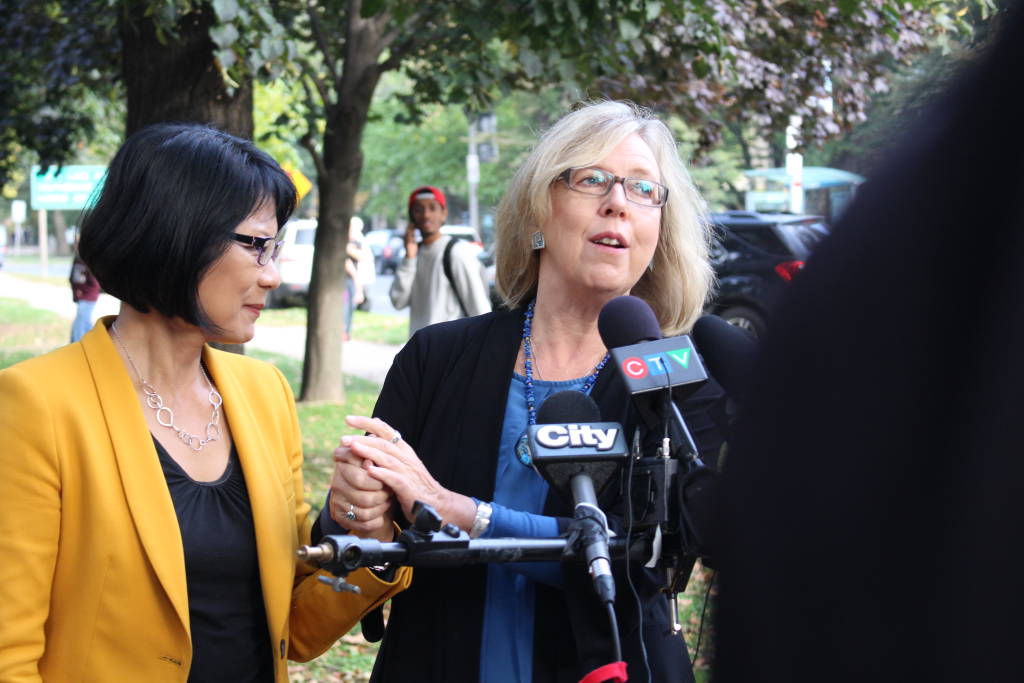Mindthis Lifestyle has a new subsection: The Feminist
The Feminist is an exploration of ‘what it means to be a woman,’ in the 21st Century through the eyes of a modern day young professional. Why does it matter to you? Our columnists believe Feminism has reached a tipping point in our society and can be used as a jumping off point for bigger conversations, guided by the principle of accessible Feminism by bringing multiple viewpoints and unheard stories to the table. The mandate of our new sub section is to break down the stereotypes and negative associations around the meaning of “Feminism” in the context of a 21st century young professional. We want to inspire our global readers to help them understand and accept that this topic is no longer a taboo, but a mainstream issue that affects every millennial.
For our first article we have a new columnist help us understand why Canadian women need to voice their thoughts in the upcoming federal election. Women playing a vital part in a fundamental pillar of democracy is a great way to highlight the importance of Feminism in the 21st century.
– Alexandra Emanuelli, Lifestyle Editor
Why millennial women need to make their voices heard this Canadian election
This election is garnering more attention around women’s issues than most — just not necessarily from the party leaders.
A group called Up for Debate, made up of an alliance of 175 women’s organizations, spent months organizing and confirming a debate among the major party leaders on women’s issues. But Conservative Party leader and current Prime Minister Stephen Harper never agreed to participate, and, at the last minute, NDP Leader Tom Mulcair pulled out and the debate was cancelled early last month.
Harper never agreed to the debate, without publicly stating why, and Mulcair claimed that a debate without Harper would have been pointless, which is why he pulled out.
Instead, each of the party leaders will be interviewed one-on-one by Up For Debate, with the interviews being released on Sept. 21. It’s the group’s ‘plan B,’ they say, but at least it’s something
Up for Debate, a coalition of organizations that represents more than four million Canadians, wants to shed light on three major goals this time around: “ending violence against women; ending women’s economic inequality; and supporting women’s leadership in organizations.”
The group points out that the last time all major party leaders debated women’s issues was in 1984, and many of the problems Canadian women faced then, still exist today. Now, more than ever, is the time to start the conversation.
At times, federal Canadian politics has a tendency to be a bit of a boys’ club. The 2011 election saw an historic high in terms of women elected to parliament, but they still only hold twenty-five percent of seats in the House of Commons.
“People will definitely notice that when they… watch clips from the House of Commons it’s very aggressive, it’s very male in nature,” says Kyla Ronellenfitsch, the national youth co-chair for Equal Voice, an organization that promotes the inclusion of women in Canadian politics. “There are definitely some women in the House who are really loud and boisterous and that’s fine, but I think that there definitely can be some changes in tonality when more women are involved. And that’s also something that’s important for getting young women interested in politics, seeing people talk about politics in ways that makes sense to them.”
But the upcoming election is a chance for millennial women to send the message that we’re not intimidated, that our voices need to be heard, and our perspectives taken into consideration.
In the last Canadian election, voter turnout was about 61 percent – only two percentage points higher than the all-time low four years before. Among millennials – ages 18 to 24 – the rate was even more bleak: 38.8 percent. Women voted at slightly higher rates than men, but still not at rates that ensure our voices are truly heard by our leaders.
“The discussion in general was really important because it cast a light on just women within the political realm,” says Ronellenfitsch, “and, in that way, I think provided a hook to a lot of women who aren’t necessarily that interested in politics to be like, ‘Well, what’s going on here, and how come we haven’t been hearing about these issues?’ and kind of showcasing that there is a place for women in politics.”
Up for Debate counted the number of times women were mentioned in the conventional leaders’ debate last month. The grand total? Four times.
“Women’s issues are often considered soft policy. They’re kinds of issues like child care or healthcare… (but) I kind of think all policy areas are important to, or should be important to women. We’re 50 percent of the population,” says Ronellenfitsch.
While ideally, all issues should be considered women’s issues, and all ‘women’s issues’ should be the responsibility of all of society, in reality there are some policy areas that affect women disproportionately.
Take childcare for example. It should be a national concern regardless of gender, but the latest Canadian statistics (from 2010) indicated that women spend an average of six and a half hours daily caring for children, while men only spend three hours. Millions of Canadian women are struggling to pay for childcare because the burden falls on them.
And then there’s the wage gap: Up for Debate wanted the leaders to explain what, if anything, they’d do about the fact that Canada’s gender pay gap is more than twice the global average, with women making about 74 percent of what Canadian men make. And that even among women, the rates are staggering. Women of colour in Canada make 64 percent what men make and Aboriginal women make just 46 percent on average.
Canadian women only hold 8.5 percent of the highest-paying jobs in the country’s top 100 companies.
And some of the issues they could have debated are full-blown national crises.
The homicide rate of Aboriginal women in Canada is 4.5 times higher than all other women, with more than a thousand Aboriginal women and girls murdered since 1980 and, as of 2013, more than a hundred who are reported missing under suspicious circumstances.
Harper has been notoriously silent on this issue, aside from insisting that it’s an issue of “crime” rather than “sociological phenomenon.”
Both Mulcair and Liberal Leader Justin Trudeau have said, if elected, they would call a national inquiry into missing and murdered Aboriginal women — something First Nations communities have been demanding for years.
On the whole, violence against women in Canada should be considered a national point of shame. It should be addressed by policy. We’re facing high rates of sexual assault, with an estimated 80 percent of victims not reporting their assaults — and even higher rates of unreported incidents among women of colour. Women with disabilities are facing sexual assault rates 150 percent higher than women without disabilities.
Think this kind of social problem can’t be remedied by policy? Take a look at Ontario’s Action Plan to Stop Sexual Violence and Harassment. A major part of the plan is a widespread awareness campaign targeted toward bystanders and encouraging them to intervene, but it also includes some concrete measures, like introducing legislation that, if passed, would extend the legal time limit on reporting a sexual assault. Currently, victims in Ontario have two years to do so.
This election is shaping up to be one of the closest races in decades, and every vote counts. The government elected in October will shape policy that will affect women for years to come, so even if issues like child care aren’t seemingly relevant now, it’s important to stay up to date on these issues and be involved.
To find out which party aligns most with the issues important to you, from foreign policy to child care, you can use https://votecompass.cbc.ca/.


